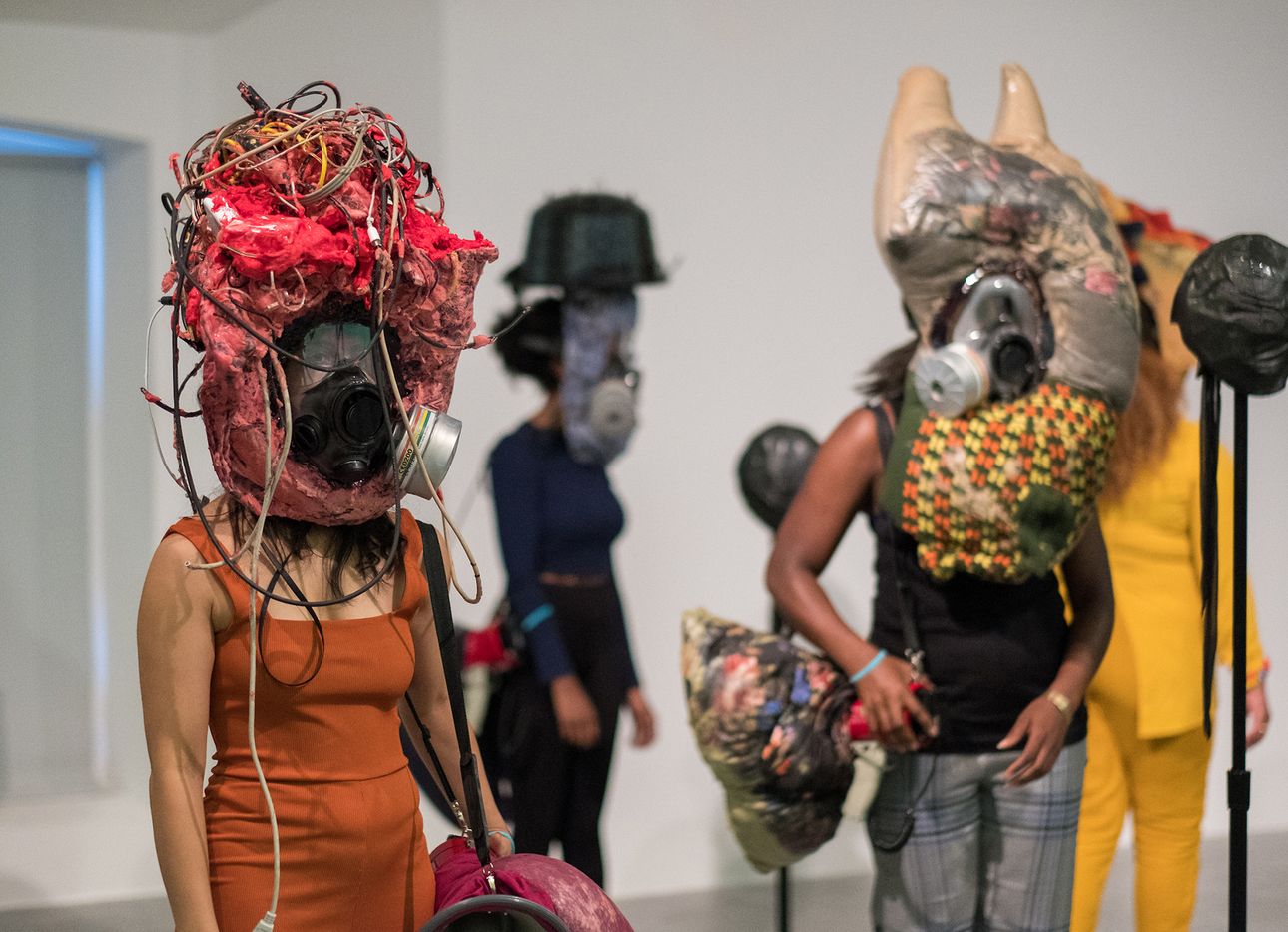
Kevin Beasley’s First Live Outdoor Performance Examines the Everyday Cacophony of a New York City Intersection
Kevin Beasley’s performances often push sound to the extreme. To witness one is to experience sonic vibrations as a visceral physical sensation. Sometimes, uncomfortably so. In “I Want My Spot Back” (2011–2012), for example, the artist turned up the volume on a cappella tracks pulled from old hip-hop albums and blasted them throughout the Museum of Modern Art’s central atrium, eliciting noise complaints. For “Your Face Is/Is Not Enough” (2016), performers breathed into megaphones, revealing emotional, and even spiritual, aspects of the basic bodily function. Beasley is particularly interested in magnifying low-frequency sounds that permeate our everyday lives. “When you’re not hearing something, it’s because the matter that it’s moving through isn’t carrying it, and it gets dispersed,” he says on Ep. 47 of Time Sensitive podcast. “And that shift—whatever that thing is, that’s either limiting it or amplifying that sound—there’s a major consequence to that.” Every wave involved in a particular sound is imperative to making sense of the source that produced it, he continues, as well as of the space you experience the sound within. “The vibrations become a way of understanding your body and its nuances—its age, its trials and tribulations. It’s like everything that you’re experiencing gets conjured up through [them].”
Beasley applies this philosophy to his first live outdoor performance, “The Sound of Morning,” debuting today and presented once daily through October 16. It’s part of the ninth-annual Performa Biennial (through October 31), a series of live happenings staged around New York City that have helped shape the conversation around performance art since 2005. (Performa’s founder, RoseLee Goldberg, discussed the organization’s development and legacy on Ep. 24 of our Time Sensitive podcast.) Beasley’s site-specific contribution takes the cacophony of the city, which usually culminates as white noise, as its muse. Ten dancers from various disciplines, dressed in sculptural costumes made from found materials, descend upon a Lower East Side intersection and execute ordinary gestures and actions in sequences that Beasley devised in collaboration with dancer and choreographer Paul Hamilton. Microphones, attached to each artist, capture the collective sounds of objects, bodies, and the city, which Beasley mixes in real time, charting familiar and foreign audible territory.
The hour-and-a-half-long piece creates a space for audiences to reflect on, and to pay more attention to, common yet overlooked sounds. In doing so, Beasley allows the distinct emanations of each note to ring clear.